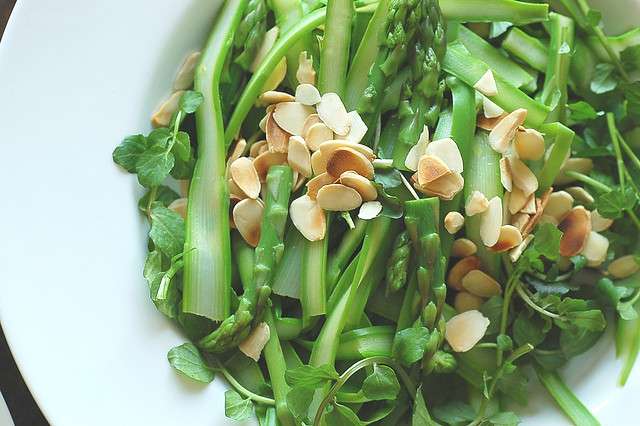'The Next Frontier in Cell Therapy' to Treat Crohn's Disease in Upcoming Clinical Trials
UK researchers have developed a treatment that uses a patient's own cells to treat their Crohn's disease - and clinical trials will begin within 6 months.

There are a number of "superfoods" out there, but this one, perhaps the least expensive, most low-calorie, and easiest to prepare, has somehow flown quietly under the radar.
Watercress (and Upland cress!) contains up to twice the vitamin C of an orange, more calcium than milk, high levels of magnesium, phosphorus, potassium, iron, beta-carotene, and vitamins A, B1, B6, K and E.
It also contains high lutein concentrations, which promote eye health and are believed to fight cancer causing free radicals.
In fact, a recent study conducted by Patterson University and published by the CDC found watercress to be the most nutrient dense food one can eat. Plant nutrient levels vary depending on variety, growing conditions and food preparation, but watercress contains high concentrations of phytonutrients, antioxidants and vitamins.
Watercress has a number of popular medicinal applications. Here are just a few examples:
Consuming watercress may help prevent eczema from returning or having inflammatory flare ups. The extract of watercress can be used as a disinfectant to wash the area as well—just boil it with water for around 10 minutes to obtain the juice.
The mustard oil glycosides, vitamins and bitters in watercress tea foster production of the stomach juices that promote digestion. Plus, it's only got 10 calories per serving!
With its high potassium content, watercress tea assists the kidneys by acting as a diuretic. Thus, the urinary tract is cleansed and bacteria are eliminated. The mustard oil glycosides and the essential oils also help kill bacteria.
Watercress contains high levels of lutein, an essential antioxidant for eye health. A bag of Grower Pete's Living Organic Watercress contains 85% higher antioxidant density than the USDA reported average value.
Due to its expectorant qualities, watercress is used to help with respiratory difficulties. Watercress contains magnesium, and should help asthmatics as it's believed that people suffering from asthma have a deficiency.
Basil is tasty, and using with watercress ups the ante on flavor and nutrition.
Give your morning juice a nutritional boost by using watercress instead of kale and you'll get more nutritional value— yes, watercress is more nutrient dense than kale or spinach!
Add watercress to any salad for more nutrition and a peppery ingredient.
It's delicious as a sautéed additive for steaks and game meat to rest upon, and the peppery flavor pairs well.
There a lot of simple ingredient broths and soups, but none as nutritional as watercress soup.
Renee Cooper is a freelance writer based in Santa Barbara, CA and works for Hollandia Produce, L.P., a leading producer of hydroponically greenhouse grown organic watercress and conventional Upland cress.
Leaf Your Friends Feeling Great By Sharing Below:
Be the first to comment